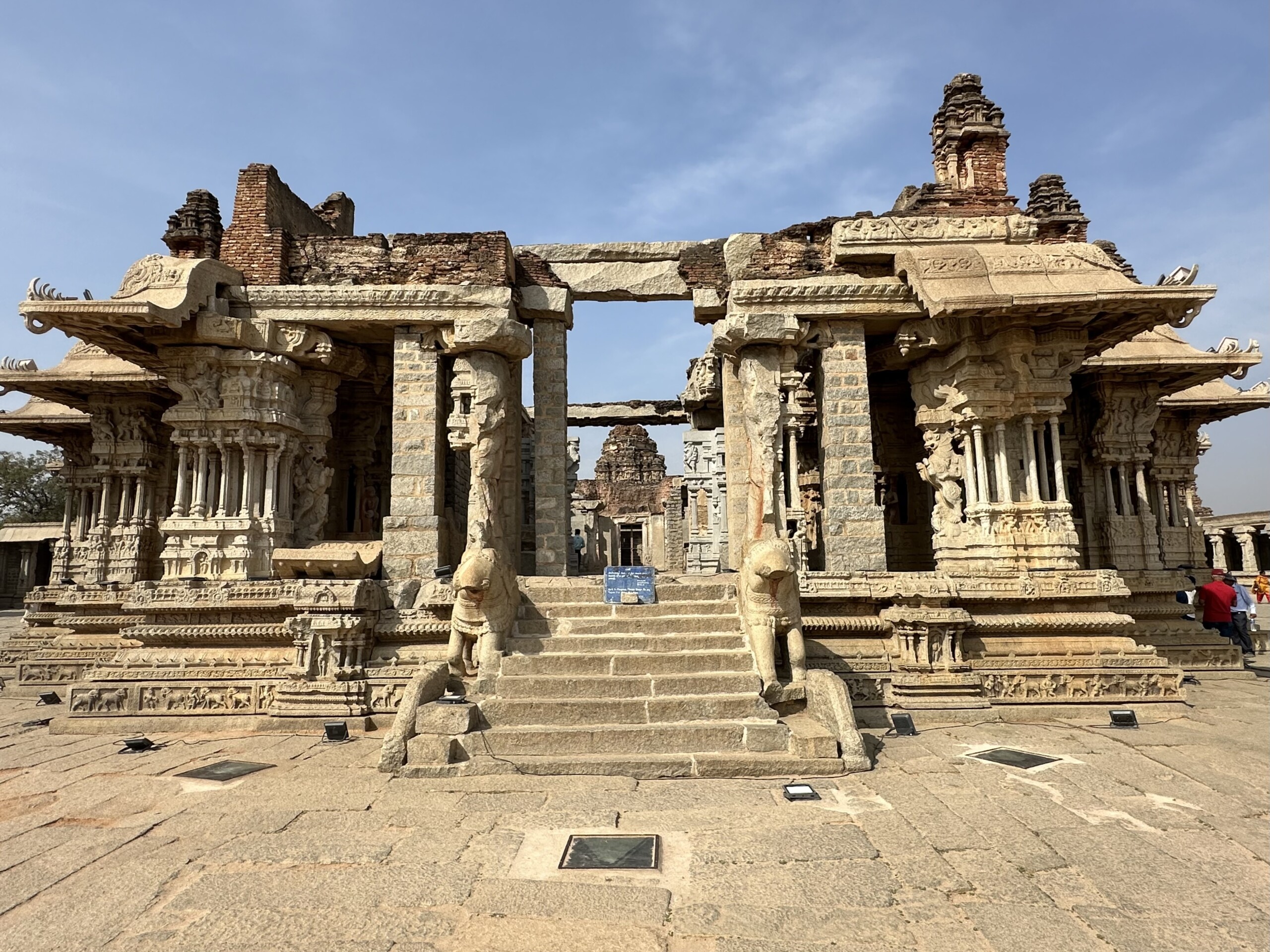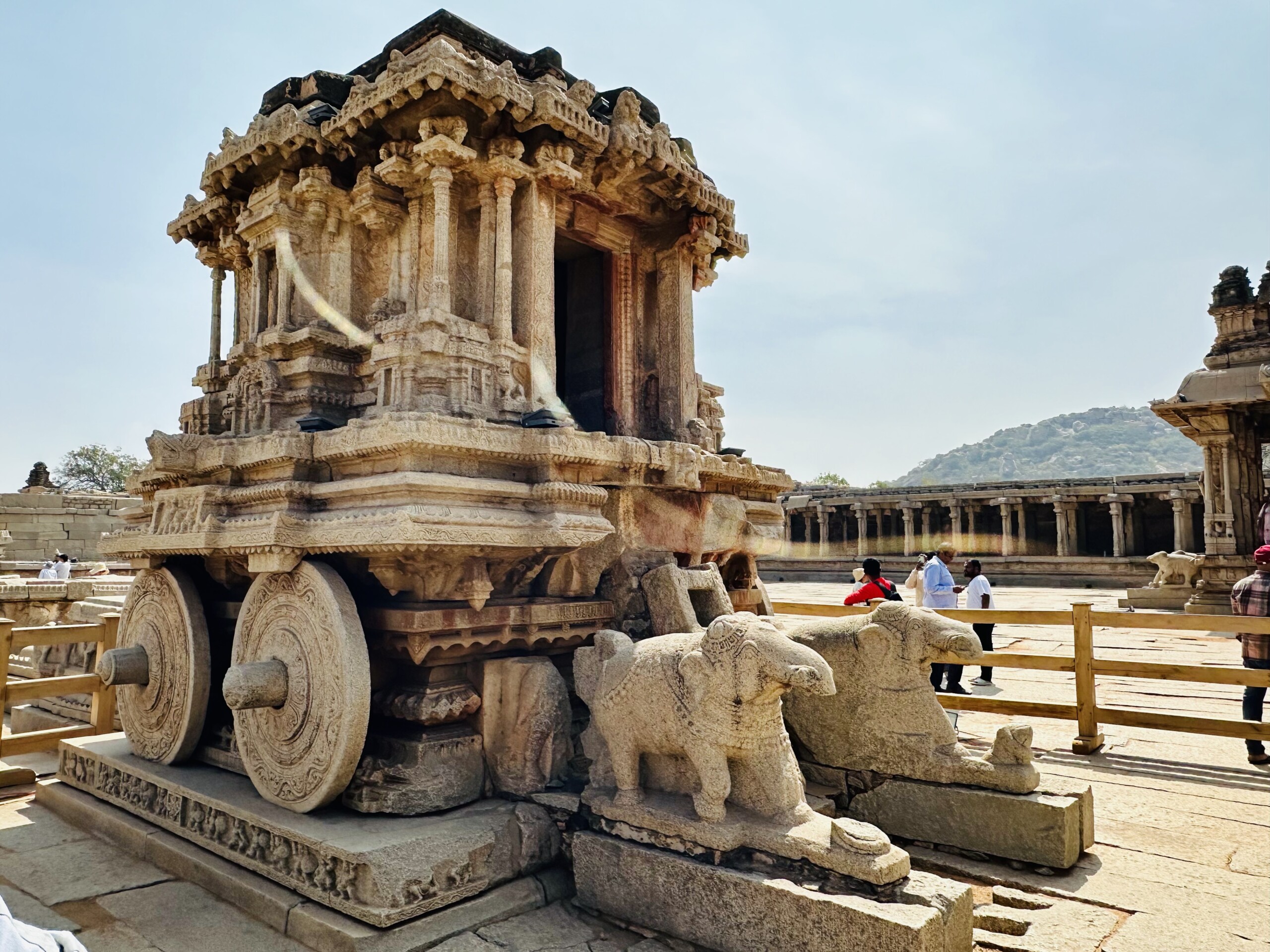Exploring the Enigmatic Majesty of Hampi Vijayanagara: A Journey Along the Tungabhadra River
On a sunny January morning, on a traditional coracle flowing down the river Tungabhadra, a dialogue unfolds, bridging the present with the echoes of a resplendent past. This is where architectural historian George Michell and historian Anirudh Kanisetti delve into the heart of Vijayanagara’s heritage, under the auspices of the Deccan Heritage Foundation. Their conversation, rich in detail and historical insight, offers us a window into the medieval metropolis of Vijayanagara, a city that was once a bustling epicenter of sacred and secular life, shaped by the genius of medieval engineers and architects.
The Canvas of the City: Reimagining Vijayanagara’s Past
Dr. George Michell brings the landscape of Vijayanagara to life, inviting us to reimagine its riverbanks, from the Virupaksha to the Vitthala temple, as they might have appeared in the city’s zenith. The seasonal swell of the Tungabhadra, unimpeded by dams in those days, would submerge riverbank carvings during the monsoon, revealing a city in tune with the rhythms of nature. This interplay between the river and the sacred, with Shiva linga carvings and depictions of Vishnu integrating the divine with the elemental, hints at a profound relationship of the city with the sacred geography of the Tungabhadra.
The Heart of the Metropolis: Urban Cores and Sacred Centers
The conversation further explores the city’s unique urban design, characterized by its ‘puras’ or urban quarters, each centered around a temple complex. These were not just places of worship but hubs of community life, complete with markets, resting places, and water reservoirs. This organization reflects a distinctive Vijayanagara innovation in urban planning, blending the sacred and the secular in a way that fostered a vibrant communal life.
Mysteries in Stone: The Enigmatic Alignment of Temples
The long colonnaded temple streets we associate with Hampi, versus the concentric Padas common in deeper South India, are a Vijayanagara invention. Another fascinating aspect of Vijayanagara architecture is the deliberate 15-degree deviation from the east-west axis in the alignment of these temple streets. This architectural enigma, potentially linked to astronomical observations or celestial events, underscores the city’s architectural sophistication and its creators’ deep engagement with the cosmos.
The Lifeblood of the City: Vijayanagara’s Hydraulic Engineering
Dr. Michell highlights the role of the Tungabhadra River as the lifeline of Vijayanagara, emphasizing the ingenuity of the city’s hydraulic engineering. As the river changed height in certain segments, there were opportunities to channel water off, enabling irrigation, which in turn made it possible to support a large population. This mastery over water resources transformed an arid landscape into one of the largest urban agglomerations of the medieval world, a testament to the vision and resourcefulness of its people.
Divine Guardianship: The Cult of Pampa and Virupaksha
Integral to Vijayanagara’s identity was its spiritual life, notably the indigenous cult of Pampa, from which Hampi derives its name. This enduring devotion to Pampa and Virupaksha, even as new deities were embraced, illustrates the deep spiritual roots and continuity that sustained the city’s cultural and religious landscape.
A Legacy Unearthed: The Vijayanagara Research Project
The conversation sheds light on the monumental efforts of the Vijayanagara Research Project, which meticulously documented the city’s remains over many years. This work not only provides invaluable insights into Vijayanagara’s grandeur but also ignites the imagination, encouraging further exploration and study.
Conclusion: A Legacy of Creativity and Resilience
The dialogue between Anirudh Kanisetti and Dr. George Michell, set against the backdrop of the Tungabhadra, offers a poignant reflection on Vijayanagara’s legacy. It is a narrative of creativity, resilience, and a profound connection to the sacred and the natural world. As we continue to uncover Vijayanagara’s mysteries, we are reminded of the enduring power of human ingenuity and the timeless allure of the medieval city that once thrived by the river’s bend.






